 W
WThe 1st King's Dragoon Guards was a cavalry regiment in the British Army. The regiment was raised by Sir John Lanier in 1685 as the 2nd Queen's Regiment of Horse, named in honour of Queen Mary, consort of King James II. It was renamed the 2nd King's Own Regiment of Horse in 1714 in honour of George I. The regiment attained the title 1st King's Dragoon Guards in 1751. The regiment served as horse cavalry until 1937 when it was mechanised with light tanks. The regiment became part of the Royal Armoured Corps in 1939. After service in the First World War and the Second World War, the regiment amalgamated with the 2nd Dragoon Guards in 1959 to form the 1st The Queen's Dragoon Guards.
 W
W2nd Army Group Royal Artillery was a brigade-sized formation organised by Britain's Royal Artillery (RA) during World War II to command medium and heavy guns. It served in the final stages of the Tunisian Campaign and throughout the Italian Campaign. It reformed in the Territorial Army in the 1950s to command air defence units.
 W
WThe 2nd Dragoon Guards was a cavalry regiment of the British Army. It was first raised in 1685 by the Earl of Peterborough as the Earl of Peterborough's Regiment of Horse by merging four existing troops of horse.
 W
WThe 7th Hussar Regiment was a regiment of hussars in the French Army.
 W
WThe 12th Mechanized Corps was a formation in the Soviet Red Army during the Second World War.
 W
WThe 157th Field Artillery Regiment is a United States Army Regimental System field artillery parent regiment of the United States Army National Guard, represented in the Colorado Army National Guard by the 3rd Battalion, 157th Field Artillery Regiment, part of the 169th Field Artillery Brigade at Colorado Springs.
 W
WThe 429th Brigade Support Battalion is a combat service support battalion of the United States Army and the Virginia National Guard. It is part of the 116th Infantry Brigade Combat Team, Virginia Army National Guard.
 W
WThe 306th Armored Cavalry Regiment was a District of Columbia-based reconnaissance unit of the United States Army Organized Reserve Corps that briefly existed after World War II. The 306th ACR later became a group before being inactivated in 1959.
 W
WThe 4721st Air Defense Group is a discontinued group of the United States Air Force. Its last assignment was with the 4700th Air Defense Wing at Larson Air Force Base, Washington, where it was last active in 1959.
 W
WThe 4727th Air Defense Group is a discontinued United States Air Force organization. Its last assignment was with the Syracuse Air Defense Sector at Griffiss Air Force Base, New York, where it was discontinued in 1959.
 W
WThe 4735th Air Defense Group is a discontinued United States Air Force organization. It was assigned to the Boston Air Defense Sector at Otis Air Force Base, Massachusetts, where it was last active in 1959.
 W
WThe 4750th Air Defense Wing is a discontinued United States Air Force unit. It was last assigned to the 73d Air Division, Air Defense Command, (ADC) at MacDill Air Force Base, Florida, where it was inactivated in 1960.
 W
WThe Border Regiment was a line infantry regiment of the British Army, which was formed in 1881 under the Childers Reforms by the amalgamation of the 34th (Cumberland) Regiment of Foot and the 55th (Westmorland) Regiment of Foot.
 W
WThe East Surrey Regiment was a line infantry regiment of the British Army in existence from 1881 until 1959. The regiment was formed in 1881 under the Childers Reforms by the amalgamation of the 31st (Huntingdonshire) Regiment of Foot, the 70th (Surrey) Regiment of Foot, the 1st Royal Surrey Militia and the 3rd Royal Surrey Militia.
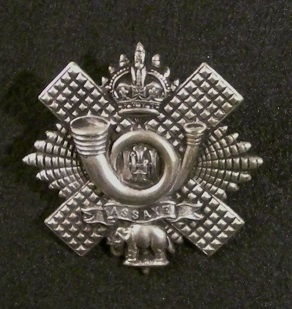 W
WThe Highland Light Infantry (HLI) was a light infantry regiment of the British Army formed in 1881. It took part in the First and Second World Wars, until it was amalgamated with the Royal Scots Fusiliers in 1959 to form the Royal Highland Fusiliers which later merged with the Royal Scots Borderers, the Black Watch, the Highlanders and the Argyll and Sutherland Highlanders to form the Royal Regiment of Scotland, becoming the 2nd Battalion of the new regiment.
 W
WRAF Home Command was the Royal Air Force command that was responsible for the maintenance and training of reserve organisations from formation on 1 February 1939 as RAF Reserve Command with interruptions until it ceased to exist on 1 April 1959.
 W
WThe King's Own Royal Regiment (Lancaster) was a line infantry regiment of the British Army. It served under various titles and fought in many wars and conflicts, including both the First and the Second World Wars, from 1680 to 1959. In 1959, the regiment was amalgamated with the Border Regiment to form the King's Own Royal Border Regiment.
 W
WThe City of London Signals was a Territorial Army unit of the British Army's Royal Corps of Signals. It had its origins in a signal company of the Royal Engineers formed in 1908 and during World War II it provided the divisional signals for the 56th (London) Division and its duplicates as well as communications for the Royal Air Force in the Middle East. Its successors continued in the postwar Territorial Army and Army Reserve until 2016.
 W
WThe Middlesex Yeomanry was a volunteer cavalry regiment of the British Army originally raised in 1797. It saw mounted and dismounted action in the Second Boer War and in World War I at Gallipoli, Salonika and in Palestine, where one of its officers won a Victoria Cross at the Battle of Buqqar Ridge and the regiment rode into Damascus with 'Lawrence of Arabia'. Between the world wars the regiment was converted to the signals role and it provided communications for armoured formations in World War II, including service in minor operations in Iraq, Palestine, Syria and Iran, as well as the Western Desert, Italian and North-West European campaigns. It continued in the postwar Territorial Army and its lineage is maintained today by 31 Signal Squadron, Royal Corps of Signals, which forms part of the Army Reserve.
 W
WThe Naval Officer-in-Charge, Aden was an administrative appointment of British Royal Navy originally established in 1839 as the Senior Naval Officer, Aden. He was responsible for HMS Sheba. It was a sub-command of the Flag Officer, Middle East.
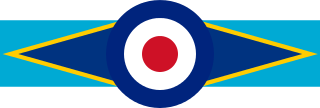 W
WThe name No. 68 Squadron has been used for two quite different units, only one of which was strictly a unit of the Royal Air Force. "No. 68 Squadron RFC" was for a time the official British military designation for No. 2 Squadron Australian Flying Corps.
 W
WNo 263 Squadron was a Royal Air Force fighter squadron formed in Italy towards the end of the First World War. After being disbanded in 1919 it was reformed in 1939 flying mainly strike and heavy fighter aircraft until becoming No 1 Squadron in 1958.
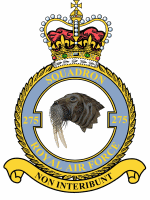 W
WNo. 275 Squadron RAF was a Royal Air Force air-sea rescue squadron that served between 1941 and 1959.
 W
WThe North Staffordshire Regiment was a line infantry regiment of the British Army, which was in existence between 1881 and 1959. The 64th Regiment of Foot was created on 21 April 1758 from the 2nd Battalion of the 11th Regiment of Foot. In 1881, under the Childers Reforms, the 64th Regiment of Foot was merged with the 98th Regiment of Foot to form the Prince of Wales's . In 1921 the regimental title was altered to the North Staffordshire Regiment .
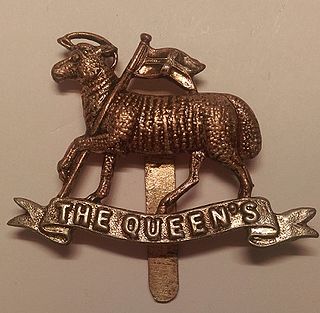 W
WThe Queen's Royal Regiment was a line infantry regiment of the English and later the British Army from 1661 to 1959. It was the senior English line infantry regiment of the British Army, behind only the Royal Scots in the British Army line infantry order of precedence.
 W
WThe RAF Second Tactical Air Force (2TAF) was one of three tactical air forces within the Royal Air Force (RAF) during and after the Second World War. It was made up of squadrons and personnel from the RAF, other British Commonwealth air forces, and exiles from German-occupied Europe. Renamed as British Air Forces of Occupation in 1945, 2TAF was recreated in 1951 and became Royal Air Force Germany in 1959.
 W
WThe Red Sea Station was one of the geographical divisions into which the Royal Navy divided its worldwide responsibilities. At various times it has also been referred to as Red Sea Division, Egypt Division and Red Sea and later the Red Sea and Canal Area it operated from 1846 until 1959 when it was unified with the Senior Naval Officer, Persian Gulf under the new appointment of Commodore, Arabian Seas and Persian Gulf.
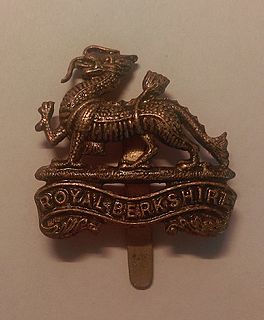 W
WThe Royal Berkshire Regiment was a line infantry regiment of the British Army in existence from 1881 until 1959. The regiment was created in 1881, as the Princess Charlotte of Wales's , by the amalgamation of the 49th (Hertfordshire) Regiment of Foot and the 66th (Berkshire) Regiment of Foot. In 1921, it was renamed the Royal Berkshire Regiment .
 W
WThe Royal Norfolk Regiment was a line infantry regiment of the British Army until 1959. Its predecessor regiment was raised in 1685 as Henry Cornwall's Regiment of Foot. In 1751, it was numbered like most other British Army regiments and named the 9th Regiment of Foot.
 W
WThe South Staffordshire Regiment was a line infantry regiment of the British Army in existence for only 68 years. The regiment was created in 1881 under the Childers Reforms by the amalgamation of the 38th Regiment of Foot and the 80th Regiment of Foot. The regiment saw service in the Second Boer War, World War I and World War II.
 W
WThe Suffolk Regiment was an infantry regiment of the line in the British Army with a history dating back to 1685. It saw service for three centuries, participating in many wars and conflicts, including the First and Second World Wars, before being amalgamated with the Royal Norfolk Regiment to form the 1st East Anglian Regiment in 1959 which, in 1964, was further amalgamated with the 2nd East Anglian Regiment, the 3rd East Anglian Regiment and the Royal Leicestershire Regiment to create the present Royal Anglian Regiment.
 W
WThe Wiltshire Regiment was a line infantry regiment of the British Army, formed in 1881 under the Childers Reforms by the amalgamation of the 62nd (Wiltshire) Regiment of Foot and the 99th Duke of Edinburgh's (Lanarkshire) Regiment of Foot.